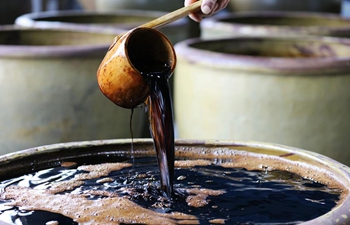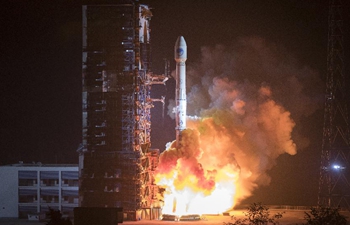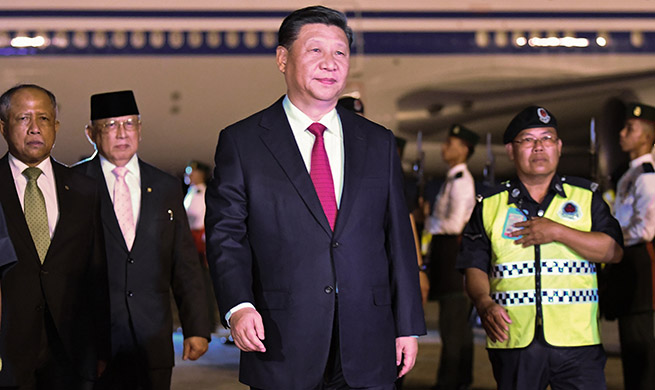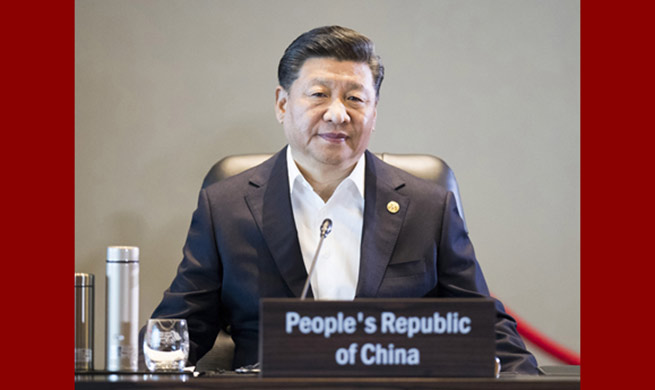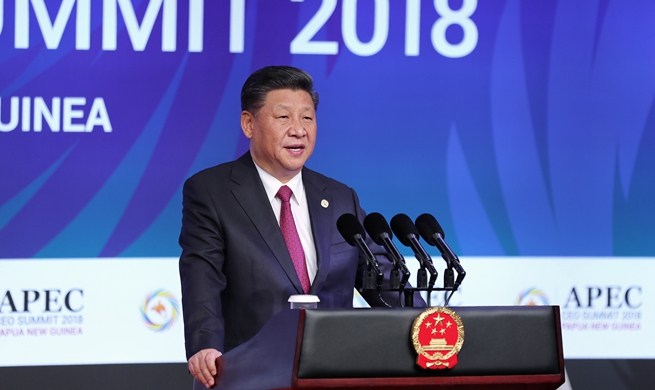TAIYUAN, Nov. 19 (Xinhua) -- On Gulou South, a bustling street in Linfen, north China's Shanxi Province, a public toilet is equipped with scales, a coatrack and other facilities. Outside, it is painted with "Angry Birds", while scrolls of inspirational couplets hang besides the door.
Toilets in the Chinese countryside, and sometimes also in cities, have earned a bad reputation for poor hygiene and unpleasant smells, but these fancy, luxury toilets are helping to change that perception.
Song Xinsheng and his wife are management staff of the fancy public toilet in Linfen, saying they have been living in there "like it's their home" for six years.
"At first we were reluctant to eat and take naps in the toilet," Song said. "But after seeing the clean environment here, we decided to stick with our jobs."
The toilet, where tender music plays out of a loudspeaker, is free of charge and open to the public 24 hours a day.
There are currently 88 such fancy toilets in Linfen. In the past ten years, public toilets in the city have moved from long, quiet and winding alleyways to bustling city streets, and have even become a city attraction.
Former local official Su Qingping has played an important part in the city's toilet revolution.
Before 2008, the city had fewer than 20 public toilets, and the toilets that did exist gave out strong, disgusting smells. The toilets, which were mostly ramshackle houses built in remote places, all failed to reach national standards.
"People would tiptoe into the toilets and come out holding their breath," Su said.
To improve the conditions, local authorities launched a program for the building of standard public toilets. But choosing locations caused them a big headache due to the negative connotations of public toilets in China.
"We wanted to build the toilets in good, important areas of the city, but the public were quite unwilling to see that happen," Su said. "Nobody wanted to live in places where there were toilets."
Su said that one time a couple, both in their 70s, stood in a pit of a new toilet under construction to protest against the project.
It took lots of Su's energy to promise a clean toilet with no impact on the lives of the public in order to get the project approved.
The toilets are built in unique ways. Besides modern equipment, the toilets have special shapes. For instance, the toilet on Linfen's main business street is built in the shape of a gold ingot. Toilets near local schools resemble pairs of glasses. There are also toilets in the shapes of cars, rainbows and old castles. But all toilets have scrolls of inspirational couplets on cubicle doors to "reflect traditional Chinese culture", Su said.
Currently, all 88 fancy toilets in the city are staffed with up to four cleaning personnel who are on duty 24/7. The toilets provide 1,900 pits.
Such government efforts in Linfen have won recognition. Last year, the city was named as "an excellent city in China's toilet revolution". As such, people from across the country were invited to see the city's achievements.
Since Linfen blazed the trail, similar toilets have popped up in other Chinese provinces. In northeast China's Liaoning Province, for example, "luxury toilets" have emerged, with Wifi access and refrigerators full of beverages. The toilets are designed with building styles usually found in southern China, featuring a pond and moon painting on a white wall and with fishbowls sat in the middle of the restroom.
Earlier this year, the country's first toilet museum opened in Linfen, and authorities hope this museum can help raise public awareness of the importance of clean toilets.
"These public toilets are a reflection of modern civilization," Su said. "It is important to guide the public towards a cleaner environment."
In 2015, the Chinese government launched its "toilet revolution" to promote sanitation upgrading across the country, complementing national efforts to remarkably improve the rural living environment and demonstrating its commitments to the UN Sustainable Development Goal (SDG) 6 for clean water and sanitation.
Nov. 19 is the World Toilet Day, an international UN observance day that is part of SDG 6 and raises awareness of safely managed sanitation.





